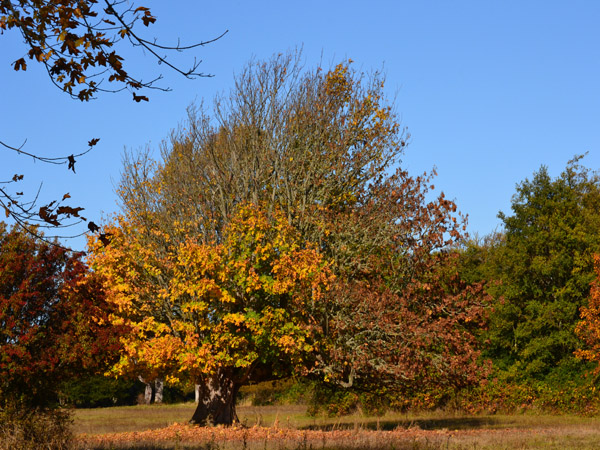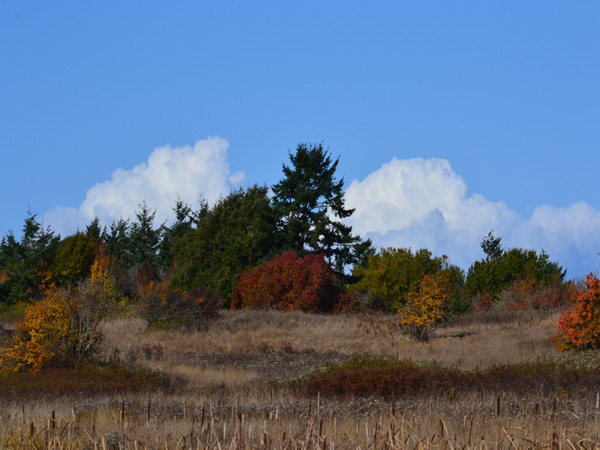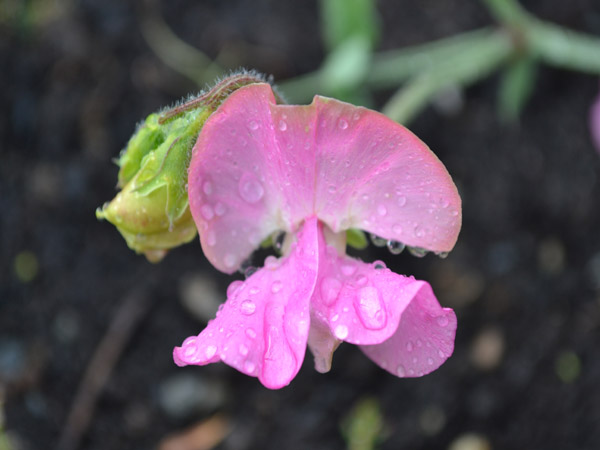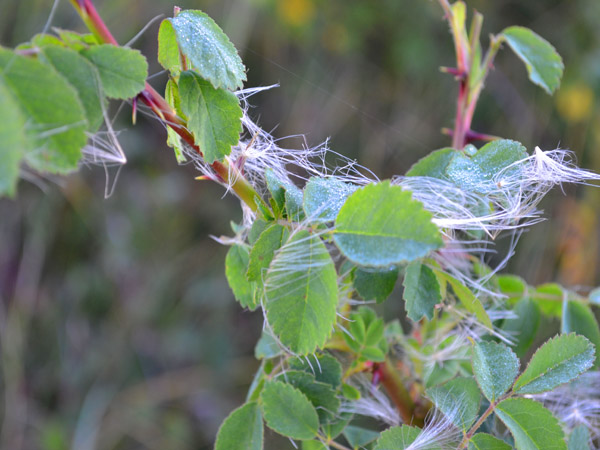This tree seems to be half in fall and half in winter.
Category: Foliage
Fall colors
Late bloomer
Four Season Trees
When I took over the Sequim Daily Photo I asked Shannon, the wondrous previous poster, if there were any posts she’d wanted but not had a chance to photograph. She mentioned the trees that border Kitchen-Dick Road and thought it would be interesting to view them with their different seasonal looks. Here’s the first season, Autumn. There are still touches of green; a good frost followed by strong winds and they’ll quickly be bare.
I didn’t do a serious investigation to determine what kinds of trees these are. Husband and neighbor opined they are poplars.
And for those of you who’ve seen the name “Kitchen-Dick” for the first time I understand that it is a combination of two pioneer family names, farmers who lived along this road. Many of the local roads are named for pioneers and descendants still live here.
Animal architecture
This might pass for a spooky Halloween mask but for its odd setting, attached securely into a bush of wild roses. I’m fairly sure this is a paper wasp nest. Nobody came or went while I was photographing, so there were no clues there. It was on the large side, about eight inches tall and perhaps six inches wide. Notice how it’s constructed completely around branches of the rose, with a “front door” opening at its base. Much as we prefer to dislike wasps and yellowjackets, they are beneficial insects that eat pests that can damage trees and shrubs. Here is more information from the Washington State University Cooperative Extension.
Here’s another view that shows more of the setting, surrounded by ripening rose hips. Though the insects abandon the nest around now, it’s not a bad neighborhood if you’re an insect looking for a nice spot. This is not near any human homes.
Bitter cherry
One of the last wild fruits of summer is the native bitter cherry. The fruits are small, about a quarter of an inch, and a very bright, shiny red. They have the unmistakable taste of cherry, but they’re not called “bitter” for nothing and easily half the fruit is seed. The bitter cherry leaves are among the first to take on the yellow gold of autumn and are quickly starting to pave trails in the Dungeness Recreation Area.
Thistle threads
Thistles grow in open, disturbed areas all over the Olympic Peninsula. After they bloom in late summer they explode into threadlike floating seeds that drift on the wind like dancers in Disney’s “Fantasia.” As seeds they have moments of poetry. Ironically, most of the plants they germinate are nasty and tenacious — some are prickly enough to draw blood.
This is what the plants look like as they shed the seeds.
And this is what they look like before they go to seed. The spider just came along for a moment of fame.










